Cave Divers Are Mortal!
Recent Trends in
Cave Diving Fatalities
by Jeffrey Bozanic
Immersed, Winter 2003, (7:4) pp. 42-46
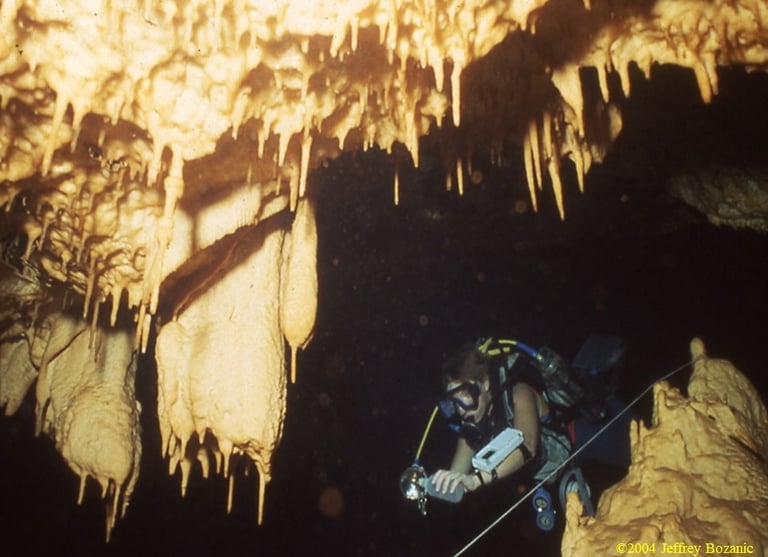

From the late 1970s to mid-1980s, the cave-diving community seemed to have the general feeling that they were “immune” to dying in caves while diving. While there were a few incidents involving trained cave divers, most of them implicated divers who were diving far beyond the level of their training (certified cavern divers doing stage dives while wearing double cylinders, etc). The vast majority of fatalities were divers who had no formal training in cave or cavern diving.
Research diving in an underwater cave in the Palaun archipelago in the Micronesia region in the western Pacific Ocean
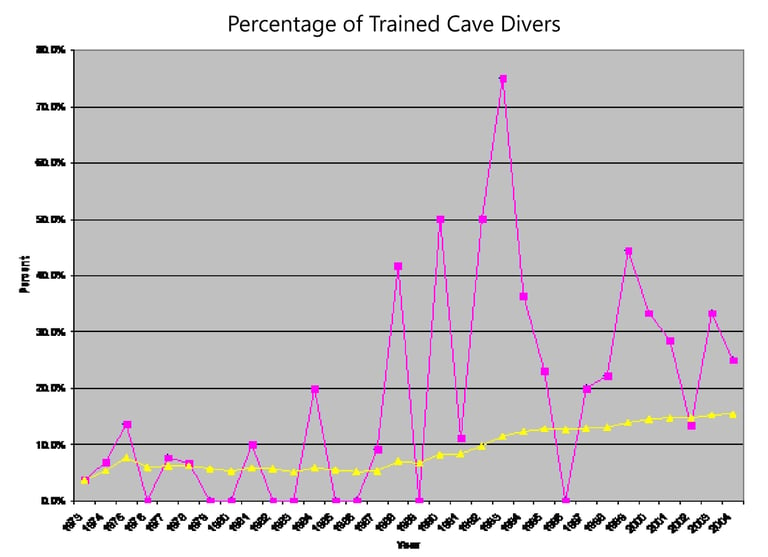

However, beginning in the late 1980s, and continuing to today, the involvement of trained cave divers in fatal incidents has increased. [Figure 2] A casual look at the trends shows that while the percentage of fatalities involving trained cave divers has become increasingly erratic, but it does not appear to be overly alarming. But a review of the data posted as a cumulative percentage of trained cave divers involved in fatal incidents shows a steady, significant increase in involvement of this population.
Figure 1: Cave Diving Fatalities for
the years 1973 to 2004. The yellow upper line represents all fatalities in
any given year, while the lower
magenta one represents only those divers who had training at any level in cavern or cave diving.
If you had asked cave divers during that time frame what they thought of their activity, most would have said, “If you have the proper training and equipment, cave diving is relatively safe,” or “An accident could never happen to me.… I’m a trained cave diver!” This was based in large part on the subjective, non-quantitative analysis of the fatality statistics. Efforts to temper this attitude of “immortality” were generally ineffective.
1. The cave-diving community had taken a very proactive stance in promoting training for this specialized form of diving. Development of training courses and materials, the warning-sign projects, promulgation of standards to the open-water diving certification agencies, and myriads of safety presentations to dive clubs and other groups have combined to form an extremely effective outreach program. Many of those divers who would otherwise have gone cavern or cave diving without proper training now seek out such training prior to participating in such diving. The more divers who get trained in cave(rn) diving, the likelier the possibility that a trained individual will perish in a cave-diving incident. Limiting access to some dive sites to only trained cave divers has further strengthened this trend.
Figure 2: Involvement of Trained Cave(rn) Divers in Fatal Incidents from the Years 1973 to 2004. The upper magenta line represents the percentage of trained cave(rn) divers involved in incidents for that individual year, the lower yellow line shows the cumulative percentage of involvement.
Further analysis shows that the average percentage of trained cave(rn) divers involved in fatal incidents was about 5% for the years 1973–1987. However, for the years 1988–2004, this average has climbed to nearly 30%! Why has this occurred? Presented in no particular order, I believe there are several reasons:
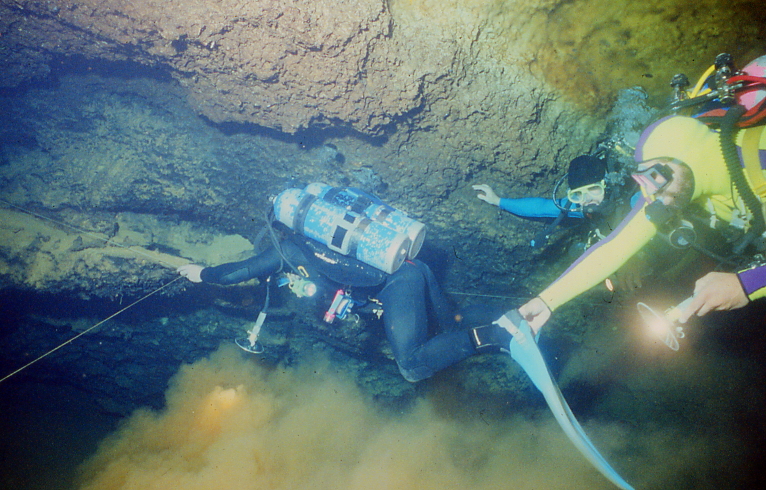

Research in Lucayan Cavern System, Grand Bahama Island
3. We have an aging population of cave(rn) divers. The diving “zealots” who pioneered this activity in the 1960s and 1970s are now getting older (present company excluded, of course!), and are exhibiting health issues consistent with their age. The newer divers often are older as well, as they are the ones who have the disposable income to participate. Both groups may have diagnosed, or even undiagnosed, health issues such as high blood pressure, coronary artery disease, poor physical conditioning, or other problems that cause or contribute to fatalities.
Teaching cave diving in
Cueva Quebrada, Cozumel, Mexico
Tri-mix diving in
Boesmansgat, South Africa
5. Finally, the issue of new or developmental technology seems to be playing a part in the number of increased fatalities in trained cave(rn) divers. Use of diver propulsion vehicles (DPVs), stage diving, side-mount diving, and rebreathers have all played a part in some fatalities. Again, the population at most implicated in this issue are the younger or mid-aged cave divers who dive on a very regular basis.
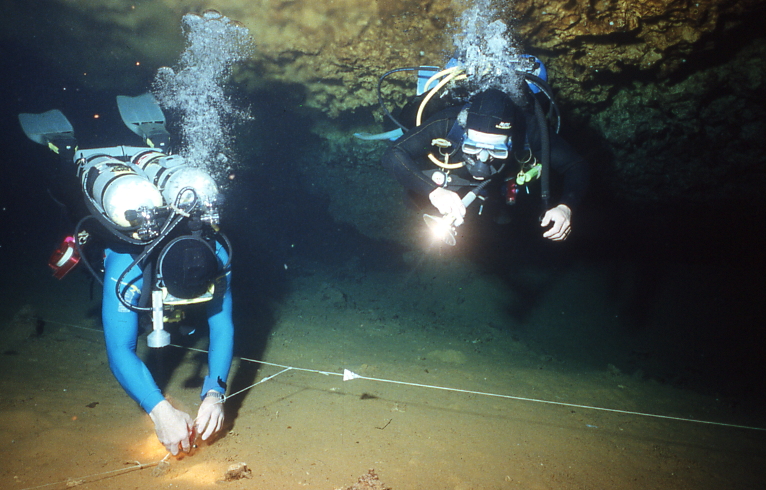

It has been some time since I last collated and published a synopsis of the cave-diving fatality data base (1-4). I am currently in the process of compiling the recent fatalities, though it will be a few more months before I am completed with this iteration of analyses. In the process of working with the data, I have developed some quite alarming statistics. Even though the data entry and analysis are not yet complete, I feel compelled to bring this information to the attention of the cave-diving community. In essence, the data seem to show that the involvement of divers with training in cave and cavern diving has significantly increased, and continues to do so.
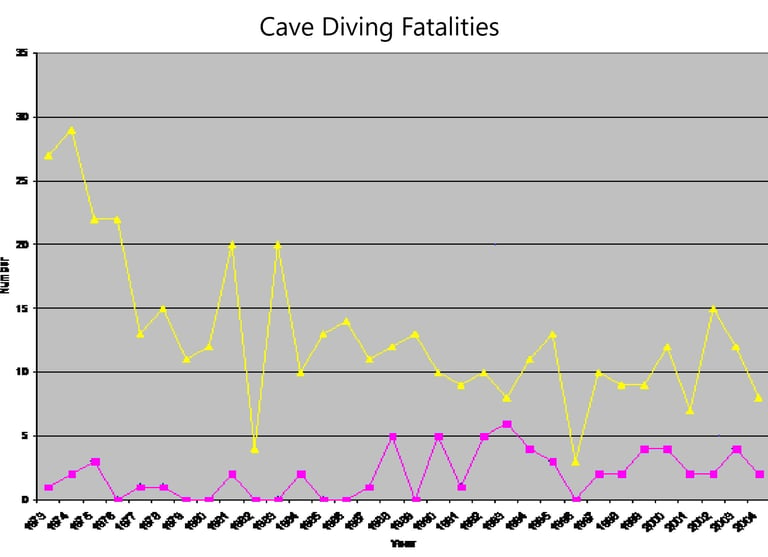

Teaching cave diving in
Cueva Quebrada, Cozumel, Mexico
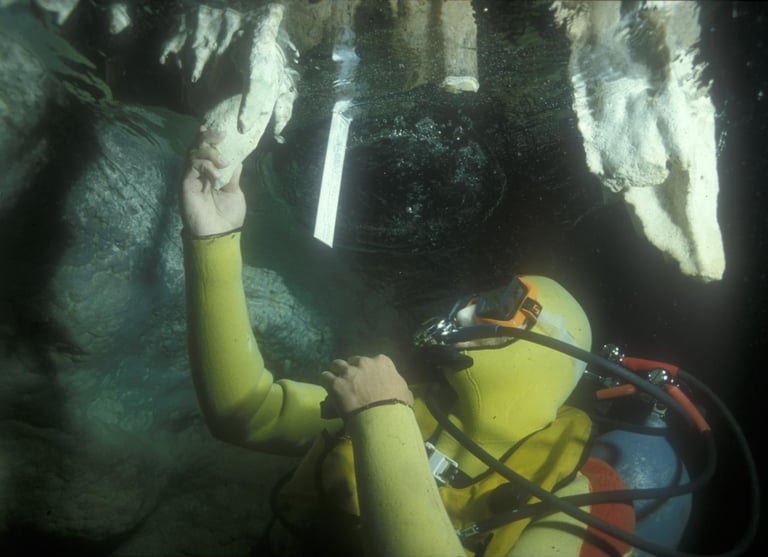

2. Cave diving is a very expensive pastime. This limits participation to two basic groups, the diving “zealots” who spend every penny they make on diving, and those with sufficient disposable income to participate without undue financial stress. This latter group has grown significantly as the number of articles in dive magazines, television programs, dive-club and dive-show presentations, and even portrayal in national mainstream magazines and movies have fostered an image of “coolness” surrounding the activity. Unfortunately, this population does not generally dive as regularly as the “zealots,” often participating in only a few cave dives once or twice per year while on vacation. This lack of consistent activity and practice leads to skill degradation that probably contributes to fatalities. This may be referred to as the “Weekend Warrior” syndrome.
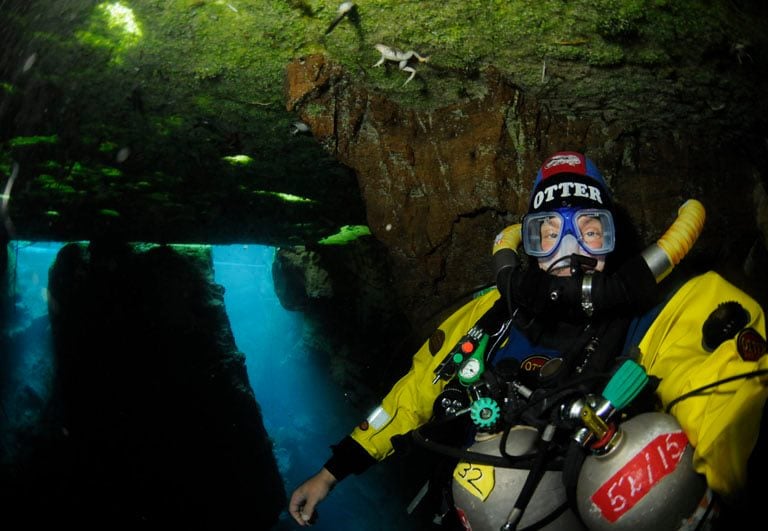

4. The aforementioned issue involves only two large subpopulations of cave(rn) divers. The third major subgroup are the younger or mid-aged diving “zealots” who are fit and dive regularly. However, this group is not immune to problems. One potential issue is that of complacency. Many of these divers cave dive regularly, sometimes two to three times weekly. With this level of activity, it is my observation, supported somewhat by fatality reports, that they begin to skip safety checks, dive briefings, dive planning, proper line protocols, or proper air rules. While they may get away with this decreased level of attention to detail in the short term, eventually some event may occur that then results in a fatality that otherwise may not have.
This information is not complete. Some incidents yet remain to be entered and analyzed. In addition, I have not as yet looked at long-term trends dealing with diving participation, either in terms of number of cave(rn) divers or number of cave(rn) dives made. Yet, the indications are that these trends are real and compelling. I suggest that every cave diver sit back and take a look at what he/she is doing, and assess how these trends may pertain to him/her individually. As I complete further analysis on the accident database, you can expect further reports like this in the near future.
NOTES
1. Bozanic, J.E., and Halpern, R.E., 1996, “A statistical evaluation of cave-diving fatalities,” in Taylor, M. (ed), Proceedings of the 24th Annual Undersea and Hyperbaric Medical Society Pacific Chapter Scientific Meeting and Diver Conference, UHMS.
2. Bozanic, J.E., 1999, “Compilation of technical diving incident database,” in Stone, T. (ed), Proceedings of the 27th Annual Undersea and Hyperbaric Medical Society Pacific Chapter Scientific Meeting and Diver Conference,
UHMS, 6 pp.
3. -----, 2001, “Cave diving fatalities in 2000,” NACD Journal,Winter 2000/Spring 2001, pp. 23–26.
4. -----, 2001, “Cave diving fatalities in 2000,” Underwater Speleology, (28:2), pp. 6–8.
***While the database contains many incidents prior to 1973, that year was selected as prior to that time standardized training programs were generally unavailable, so the evaluation of those incidents in this context is nonsensical. Further articles on the topic will include data from that time period.***
All content, images and text copright © Jeffrey Bozanic (except as noted). All rights reserved worldwide. No images or text may be copied, duplicated, modified, or redistributed in part of whole (except for printing for personal reference) without prior written consent from Jeffrey Bozanic.
